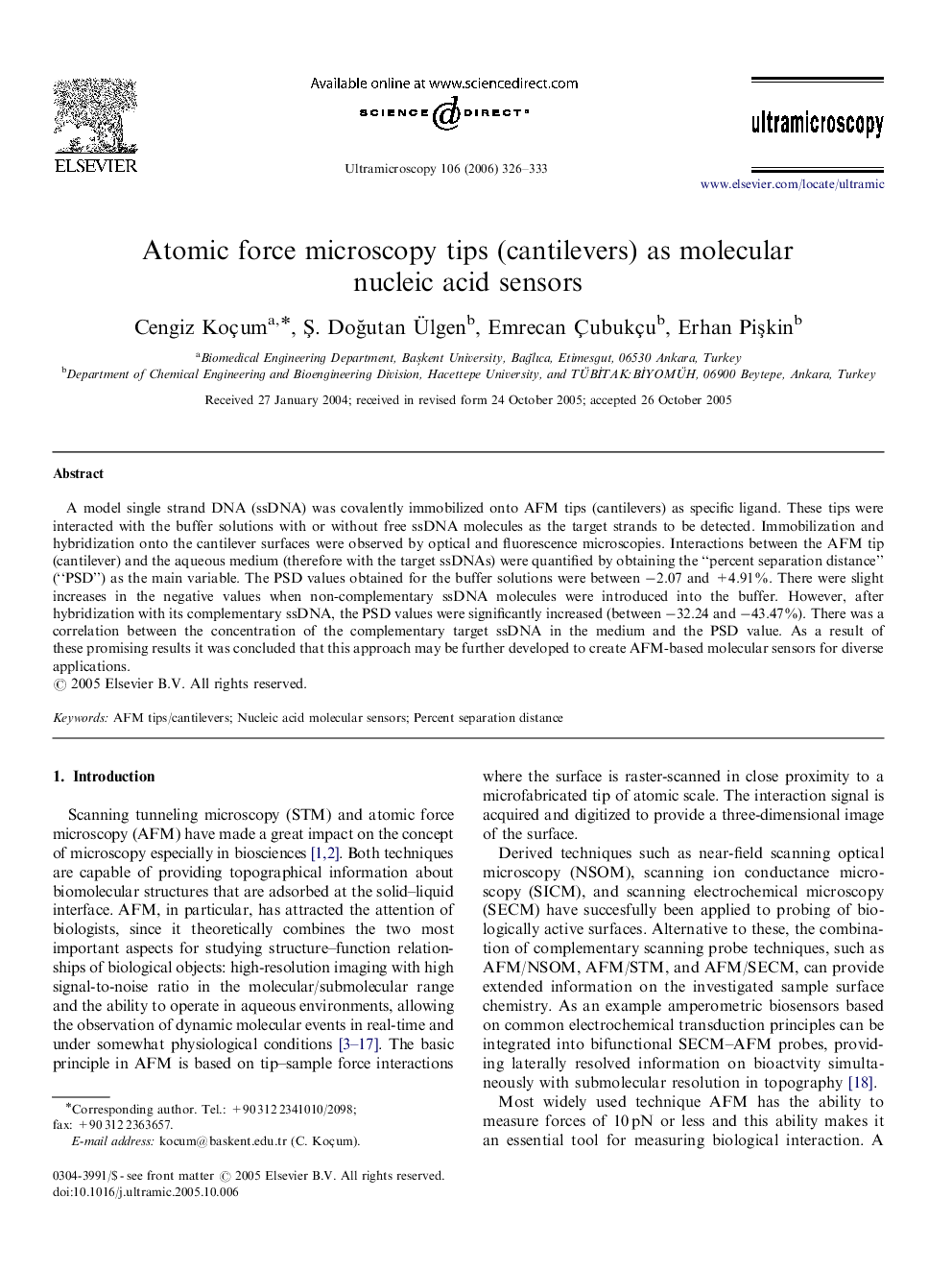| Article ID | Journal | Published Year | Pages | File Type |
|---|---|---|---|---|
| 1678724 | Ultramicroscopy | 2006 | 8 Pages |
Abstract
A model single strand DNA (ssDNA) was covalently immobilized onto AFM tips (cantilevers) as specific ligand. These tips were interacted with the buffer solutions with or without free ssDNA molecules as the target strands to be detected. Immobilization and hybridization onto the cantilever surfaces were observed by optical and fluorescence microscopies. Interactions between the AFM tip (cantilever) and the aqueous medium (therefore with the target ssDNAs) were quantified by obtaining the “percent separation distance” (“PSD”) as the main variable. The PSD values obtained for the buffer solutions were between â2.07 and +4.91%. There were slight increases in the negative values when non-complementary ssDNA molecules were introduced into the buffer. However, after hybridization with its complementary ssDNA, the PSD values were significantly increased (between â32.24 and â43.47%). There was a correlation between the concentration of the complementary target ssDNA in the medium and the PSD value. As a result of these promising results it was concluded that this approach may be further developed to create AFM-based molecular sensors for diverse applications.
Related Topics
Physical Sciences and Engineering
Materials Science
Nanotechnology
Authors
Cengiz Koçum, Å. DoÄutan Ãlgen, Emrecan Ãubukçu, Erhan PiÅkin,
